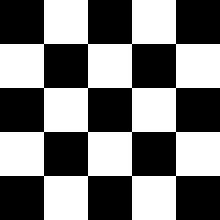- Moran's I
-
In statistics, Moran's I is a measure of spatial autocorrelation developed by Patrick A.P. Moran.[1] Spatial autocorrelation is characterized by a correlation in a signal among nearby locations in space. Spatial autocorrelation is more complex than one-dimensional autocorrelation because spatial correlation is multi-dimensional (i.e. 2 or 3 dimensions of space) and multi-directional.
Moran's I is defined as
where N is the number of spatial units indexed by i and j; X is the variable of interest;
 is the mean of X; and wij is an element of a matrix of spatial weights.
is the mean of X; and wij is an element of a matrix of spatial weights.The expected value of Moran's I under hypothesis of no spatial autocorrelation is
Its variance equals
where
Negative (positive) values indicate negative (positive) spatial autocorrelation. Values range from −1 (indicating perfect dispersion) to +1 (perfect correlation). A zero value indicates a random spatial pattern. For statistical hypothesis testing, Moran's I values can be transformed to Z-scores in which values greater than 1.96 or smaller than −1.96 indicate spatial autocorrelation that is significant at the 5% level.
Moran's I is inversely related to Geary's C, but it is not identical. Moran's I is a measure of global spatial autocorrelation, while Geary's C is more sensitive to local spatial autocorrelation.
Sources
- ^ Moran, P. A. P. (1950). "Notes on Continuous Stochastic Phenomena". Biometrika 37 (1): 17–23. doi:10.2307/2332142. JSTOR 2332142.
See also
Categories:- Spatial data analysis
- Covariance and correlation
Wikimedia Foundation. 2010.









